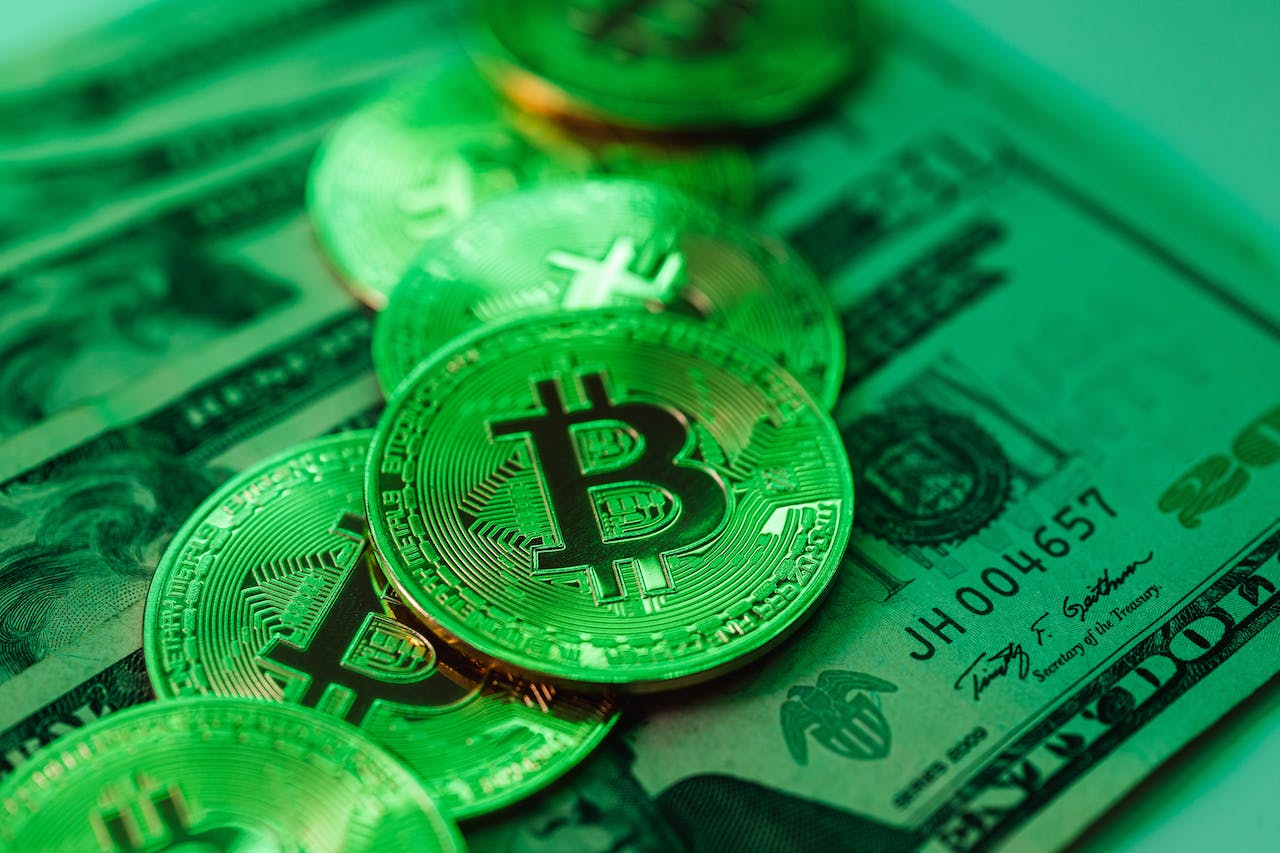Introduction
What is Money made of? Money, a concept that has evolved over centuries, plays a pivotal role in our daily lives. Understanding what money is made of goes beyond the tangible bills and coins we use. In this comprehensive exploration, we will delve into the historical evolution and the intricate components that make up the essence of money.
Historical Evolution of Money
In the early days, people engaged in a simple yet challenging barter system, exchanging goods and services directly. However, as societies grew more complex, the limitations of bartering became apparent. This led to the emergence of commodity money, where items with intrinsic value, such as salt or livestock, were used as mediums of exchange. The subsequent introduction of metallic coins and eventually paper currency marked significant milestones in the evolution of money, facilitating trade and economic growth.
Modern Forms of Money
Fast forward to the present day, and money has taken various forms to adapt to the changing landscape. Fiat currency, the most common form, is currency declared by a government to be legal tender, not backed by a physical commodity like gold. Additionally, digital currencies and cryptocurrencies have become integral components of the modern financial ecosystem, challenging traditional notions of money.
Composition of Physical Currency
Ever wondered what your banknotes are made of? The composition of physical currency is a fascinating blend of art and science. Paper money is typically crafted from a combination of cotton and linen, providing durability and resilience against wear and tear. On the other hand, coins, those small but weighty tokens of value, are often crafted from specific metals and alloys, carefully chosen to withstand the rigors of circulation.
Fiat Currency and Its Backing
While fiat currency isn’t backed by physical commodities, its value is intrinsically linked to the trust and confidence people place in the government issuing it. Governments, through central banks, manage the supply of money and implement policies to stabilize its value. Understanding this relationship is crucial to grasping the dynamics of modern economies.
Digital Currencies: The Technological Revolution
The technological era has ushered in digital currencies, representing a paradigm shift in how we transact. Digital currencies, existing purely in electronic form, offer advantages such as instantaneous transactions and increased financial inclusion. However, this technological revolution also brings challenges, including concerns about security and regulatory frameworks.
Cryptocurrencies: A New Era in Money
At the forefront of the digital currency revolution are cryptocurrencies, decentralized digital assets with cryptographic security. Bitcoin, Ethereum, and a myriad of other cryptocurrencies operate on blockchain technology, a decentralized and transparent ledger. The unique characteristics of cryptocurrencies, including limited supply and anonymity, have ignited debates on their role in the future of money.
Central Bank Money: Understanding the Basics
Central banks play a critical role in the monetary systems of countries. Beyond issuing physical currency, central banks manage reserves in the form of digital entries. These reserves influence the money supply, impacting inflation rates and economic stability. A delicate balance is maintained to ensure the smooth functioning of financial systems.
The Role of Gold in Monetary Systems
While no longer the primary basis for monetary systems, gold retains its historical significance. Central banks and investors view gold as a store of value and a hedge against economic uncertainties. Understanding its role provides insights into the stability of currencies and global financial markets.
Money Supply and its Components
Delving into the technicalities, we explore the various components of the money supply. M0 represents physical currency, while M1, M2, and M3 encompass broader definitions, including deposits and credit. Understanding these components is crucial for policymakers in managing economic stability.
Inflation and its Impact on Money
The relationship between inflation and the value of money is intricate. Governments and central banks employ measures such as interest rate adjustments to control inflation, preserving the purchasing power of their currencies. This dynamic interplay is at the heart of monetary policy decisions.
Challenges in Determining the Value of Money
What is Money made of: Determining the value of money is a complex task influenced by economic factors and global dynamics. Fluctuations in exchange rates, geopolitical events, and changes in consumer behavior contribute to the challenges in accurately assessing the value of money. Navigating these challenges requires a nuanced understanding of the interconnected global economy.
The Future of Money
As we peer into the future, we witness evolving trends in payment systems. The rise of mobile payment systems, contactless transactions, and the integration of artificial intelligence in financial services hint at a future where the concept of money continues to adapt. The potential developments in the way we transact and store value underscore the need for flexibility in our understanding of money.
Money in the Digital Age – What Is Money Made Of?
The digital age has accelerated the transformation of money. Mobile payment systems, facilitated by smartphones and high-speed internet, have become ubiquitous. From mobile wallets to peer-to-peer payment apps, the landscape of financial transactions is evolving rapidly, providing unparalleled convenience to users.
Social and Cultural Influences on Money
Beyond the economic aspects, the concept of money is intricately tied to social and cultural influences. Attitudes toward money, spending habits, and cultural practices shape the way individuals and societies perceive and interact with currency. Understanding these influences adds depth to our comprehension of the multifaceted nature of money.
Governmental Regulations and Money
Governments play a pivotal role in shaping monetary policies and regulations. The stability of a nation’s currency is often influenced by the decisions and interventions of its government and central bank. Regulatory changes, including those related to taxation and financial reporting, can have profound effects on the functioning of money systems.
Financial Inclusion and Access to Money
In an increasingly interconnected world, ensuring financial inclusion is a priority. Initiatives aimed at providing access to financial services for individuals in underserved communities contribute to economic development. From microfinance to digital banking, efforts to bridge the gap in financial access continue to evolve.
Cryptocurrency Adoption and Challenges
What is Money made of: The adoption of cryptocurrencies is gaining momentum, with businesses and individuals increasingly accepting them as a form of payment. However, this shift is not without challenges. Regulatory uncertainties, concerns about security, and the volatile nature of cryptocurrency markets present hurdles that must be addressed for widespread acceptance.
Technological Innovations in Money Security
Advancements in technology play a crucial role in ensuring the security of money. From sophisticated anti-counterfeiting measures in physical currency to the revolutionary potential of blockchain in securing digital transactions, ongoing innovations contribute to the integrity of monetary systems.
Globalization and Money Flows
What is Money made of: The interconnectedness of the global economy has profound implications for money flows. Cross-border transactions, facilitated by international trade and digital finance, require robust regulatory frameworks. The challenges of regulating global money flows underscore the need for collaborative efforts among nations to maintain financial stability.
Conclusion
In conclusion, the concept of what money is made of is dynamic and multifaceted. From its historical roots to the technological advancements shaping its future, money remains a cornerstone of our global economy. As we navigate the complexities, understanding the diverse forms and influences of money enhances our financial literacy.
Frequently Asked Questions
Q: What materials are used to make paper currency?
A: Paper currency is typically made from a blend of cotton and linen to ensure durability.
Q: How is the value of fiat currency determined?
A: The value of fiat currency is determined by the trust and confidence people place in the government issuing it.
Q: What is the role of central banks in influencing the money supply?
A: Central banks, through their reserves and policies, play a crucial role in influencing the money supply to maintain economic stability.
Q: Why is gold still relevant in the context of modern monetary systems?
A: Gold holds historical significance and continues to have a connection to modern financial markets, influencing stability.
Q: What factors contribute to the challenges in determining the value of money?
A: Economic factors, global influences, and geopolitical events contribute to the challenges in determining the value of money.
Delve Deeper into Articles: Lucy In The Sky Dresses Return Policy



